The Ironstride Corps
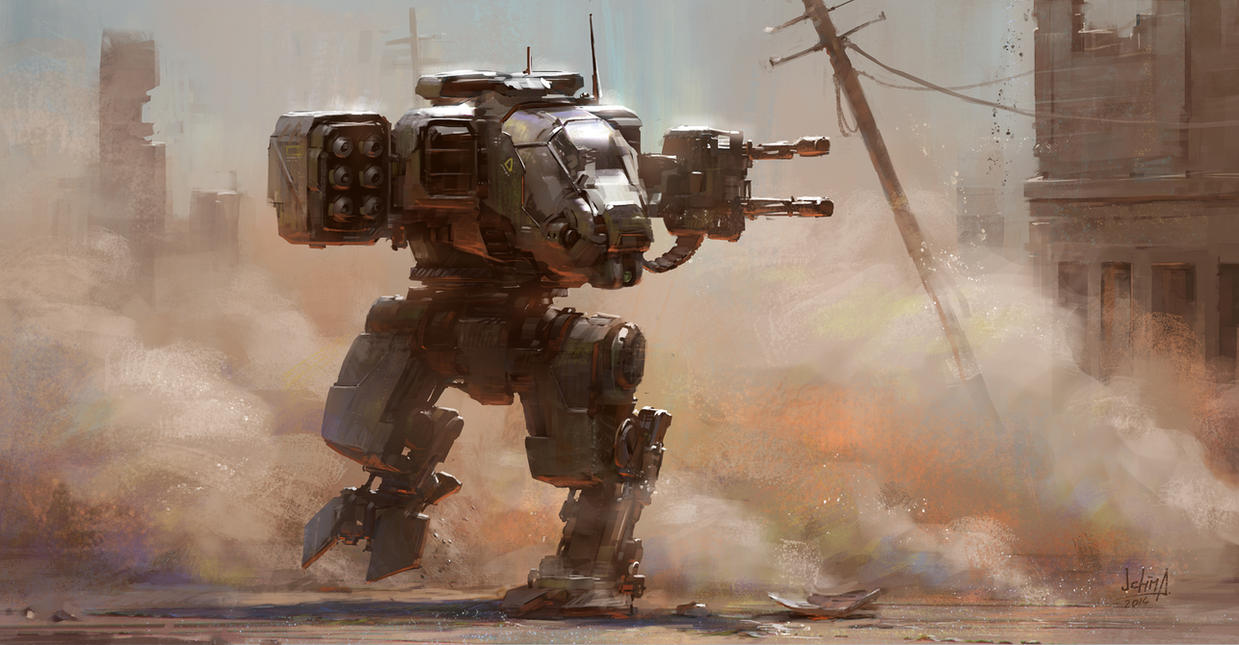
The Ironstride Corps is the mechanized and armored arm of the Heimveld’s military, responsible for swift assaults, mobile firepower, and dominating ground engagements. Their vehicles and walkers are built for functionality and durability, with mass-produced designs that combine art nouveau embellishments with brutal utilitarianism. Equipment is standardized yet reliable, reflecting the Corps’ ethos of efficiency over extravagance.
Primary Equipment and Vehicles
1. Transport APC
Description: The Transport Armored Personnel Carrier (APC) is a backbone unit of the Ironstride Corps, designed for moving infantry quickly and safely across dangerous terrain. The vehicle features a rectangular hull with reinforced tracks or half-tracks, granting it exceptional all-terrain mobility, even in rugged environments like mud, snow, or rocky wastelands. The armor plating has been engineered for maximum durability against small arms fire and shrapnel, while maintaining a weight balance that allows for sustained operational speeds. The APC’s most distinctive feature is its outer armor, which is embossed with intricate vine-like patterns—both a nod to the Heimveld’s aesthetic traditions and a morale-boosting symbol of order and growth amidst the chaos of war. These decorative motifs are especially prominent on command variants, often gilded or painted in ceremonial colors.
Interior Details:
The interior of the APC is utilitarian, with benches along either side for seating troops. Crash restraints and magnetic weapon racks line the walls, ensuring maximum organization during high-speed maneuvers. A centralized control panel allows a squad leader to coordinate communications with the command network.
Crew & Troop Interaction:
The vehicle is crewed by a driver and gunner, with room for 10-12 soldiers. Troops exit via a rear drop-down ramp that doubles as a protective cover when deployed, shielding disembarking soldiers from direct fire. A top hatch allows for emergency egress or provides a position for a marksman or spotter to fire while on the move.
- Armament: Mounted small-caliber high-velocity rotary cannon.
- Capacity: 10-12 troops or equivalent cargo.
- Defense: Medium plasteel armor.
- Sensors: A rudimentary infrared scanner helps detect concealed threats, such as mines or hidden ambushes.
- Power Source: Operates on a hybrid energy-diesel core for extended operational range in resource-scarce environments.
- Field Adaptability: Modular mounting points allow the APC to be converted for secondary roles, such as ambulances, command posts, or supply carriers.
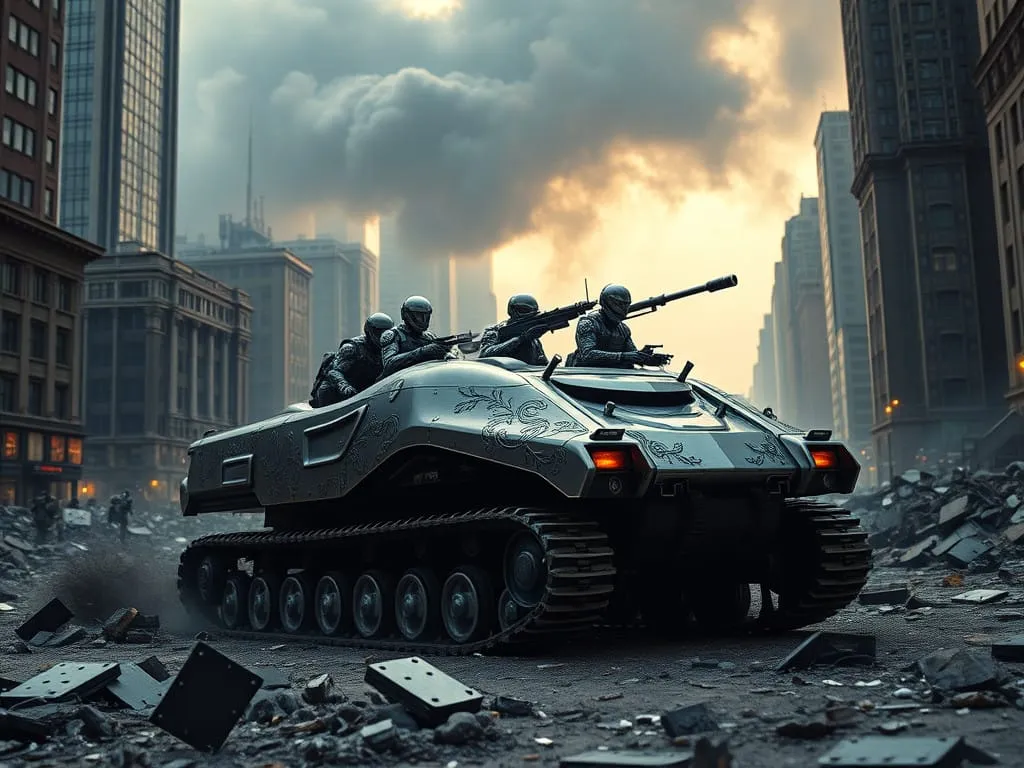
2. Jet Bikes
Description: Jet Bikes, officially designated as Rapid Assault Hovercraft (RAH-9), are sleek, agile single-rider vehicles engineered for high-speed reconnaissance, hit-and-run assaults, and flanking maneuvers. Their elongated chassis holds a powerful micro-reactor in it’s blunt nose, and anti-grav impulsors beneath the frame emit a faint, pulsating hum during operation. The body panels are adorned with subtle vine-like engravings, reflecting the Corps’ aristocratic aesthetic even in the smallest details. The bikes are designed for extreme speed, capable of reaching over 300 kph in open terrain. Advanced gyroscopic stabilizers and adaptive thrusters ensure that the vehicle remains maneuverable even at maximum velocity, making it an ideal choice for weaving through urban battlefields or rugged landscapes.
Armament & Combat Role:
Jet Bikes are outfitted with dual nose-mounted light plasma guns, designed for precision strikes against infantry and lightly armored targets. Their rapid-fire mode enables suppression, while a focused shot mode allows penetration of thin vehicle armor. The plasma guns are powered by a compact energy cell, providing sufficient charge for extended engagements.
Jet Bike squadrons are often deployed ahead of larger forces to scout enemy positions or harass supply lines. Their speed and agility make them difficult to target, and their plasma weapons can wreak havoc on unsuspecting enemies.
Pilot Features:
The bike’s cockpit is an open design, with the rider leaning forward into an ergonomic seat. The pilot wears a specialized helmet equipped with a HUD (Heads-Up Display) that syncs directly with the bike’s targeting systems, allowing them to aim and fire with precision. Handgrips on the bike control speed and maneuvering, while pedals manage altitude adjustments and sudden directional changes.
Tactical Use:
Jet Bikes are often seen zipping between enemy lines, striking hard and retreating before retaliation is possible. While highly effective in their role, their light defenses make them vulnerable to concentrated anti-vehicle fire, requiring skilled piloting and coordinated squad tactics.
Defense Systems:
-
Energy Shielding: Light shields provide limited protection against small arms fire but are designed more for deflecting debris or environmental hazards during high-speed travel.
-
Stealth Mode: A low-emission mode allows Jet Bikes to reduce their energy signature, making them harder to detect during reconnaissance missions.
-
Armament: Dual light plasma guns mounted on the nose.
-
Speed: Extremely fast and agile, capable of high-speed chases.
-
Modularity: Recon variants may carry advanced sensor suites for tracking enemy movements, while command variants include enhanced communications arrays.
-
Emergency Ejection System: In case of a critical failure, the pilot can activate a compressed air ejection system, launching them to safety.
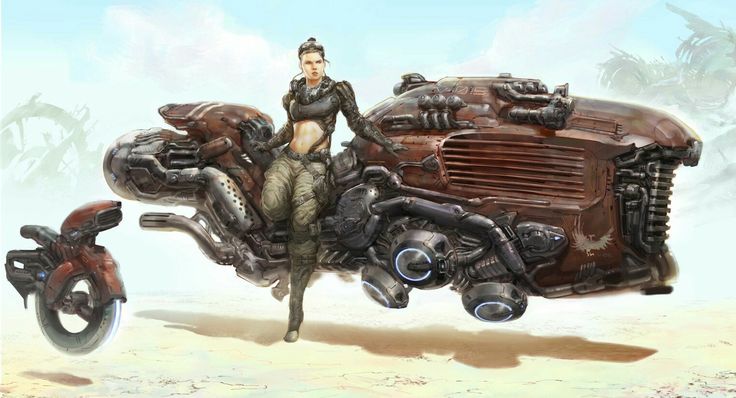
3. Walkers
- A. Stalkers (Scout Walkers)
Description: The Stalker Light Recon Walker is a nimble, bipedal mech standing 4 meters tall, designed for reconnaissance, light skirmishing, and rapid response. Its insect-like frame, with long articulated legs and a compact central cockpit, allows it to traverse rugged terrain, scale inclines, and even leap short distances. The skeletal design prioritizes speed and agility over durability, making the Stalker ideal for gathering intel and harassing enemy forces without becoming bogged down in prolonged engagements. Each Stalker is coated in a matte finish, typically dark gray or environment-specific camouflage. The cockpit is enclosed within an armored canopy, engraved with fine decorative motifs reminiscent of the Heimveld’s art nouveau style.
Armament:
- Primary Weapon: A light plasma cannon mounted beneath the cockpit, capable of rapid bursts to disable infantry or vehicles.
- Secondary Weapon: A swivel-mounted machine gun attached to the side of the cockpit for suppressing enemy troops or intercepting light drones.
Sensors & Recon Systems:
The Stalker’s primary strength lies in its advanced sensor suite, which includes:
- Long-range thermal imaging.
- Motion tracking to detect enemy movement.
- Advanced communications equipment for relaying data back to command.
These systems allow the Stalker to operate as an “eye in the field,” feeding critical battlefield intelligence to higher command.
Mobility & Defense:
- Articulated Legs: The Stalker’s jointed legs enable it to climb over obstacles, maintain stability on uneven ground, and perform quick directional shifts during movement.
- Defense: Light plasteel armor provides minimal protection, while an energy dampening field reduces its sensor signature, making it harder to detect.
Tactical Role:
Stalkers often operate in pairs or small squads, scouting enemy lines, marking targets for artillery, and probing weak points in defenses. They avoid direct combat unless overwhelming the enemy is guaranteed.
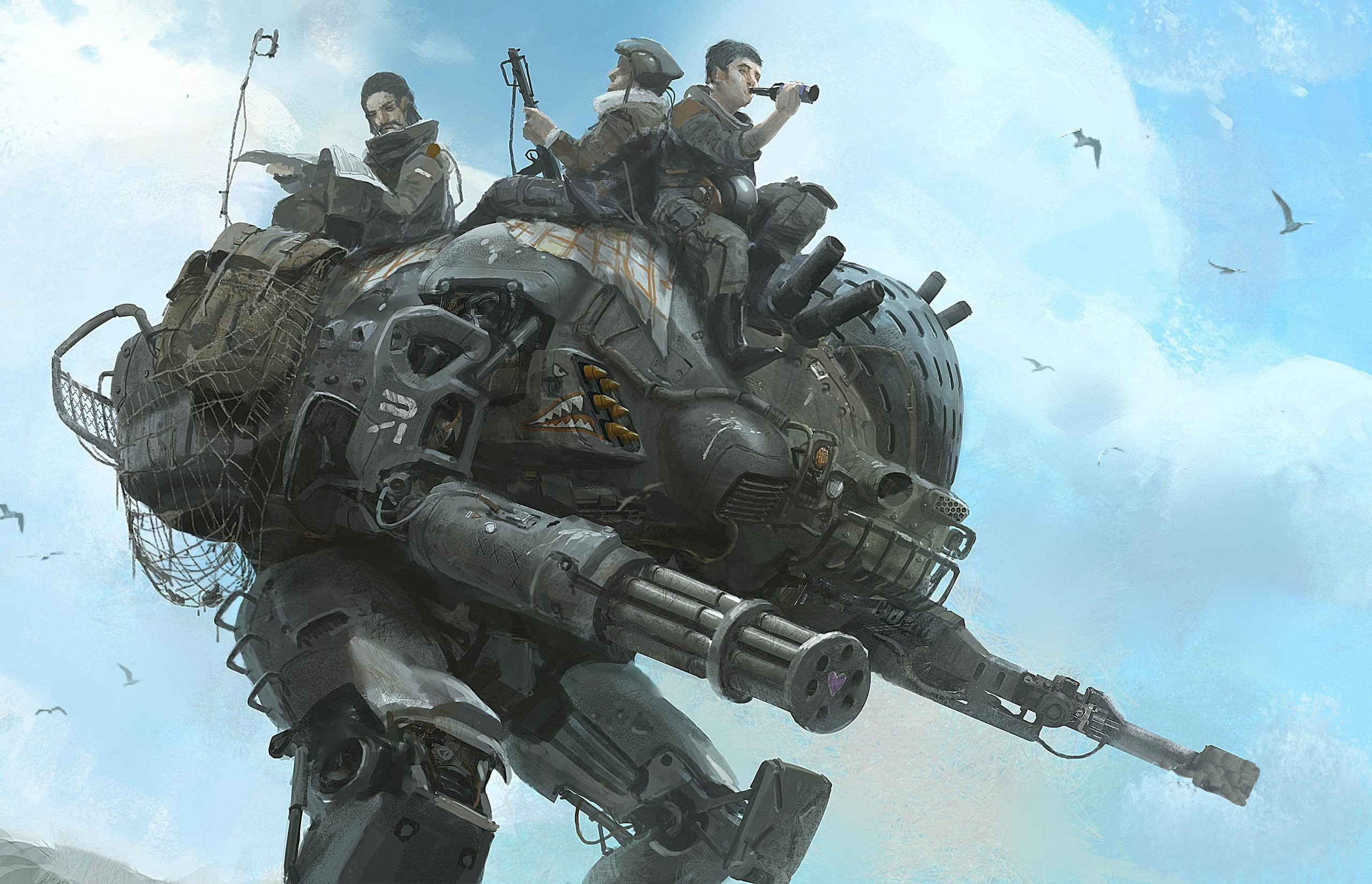
- B. Lancers (Combat Walkers)
Description: The Lancer Medium Combat Walker is a versatile, multi-role mech standing between 5 to 7 meters tall, designed to deliver devastating firepower while holding its own in melee combat. Its design features a robust, boxy torso supported by reinforced, jointed legs, allowing it to remain stable even while firing heavy weapons. Unlike the Stalker, the Lancer’s cockpit is heavily reinforced, with decorative plates that include stylized motifs of flames, laurels, or geometric patterns.
The Lancer is deployed as a line-breaking unit, capable of spearheading assaults and holding strategic positions. Its imposing frame and combination of ranged and melee weaponry make it a fearsome presence on the battlefield. Armament:
-
Ranged Weapon: The Lancer is equipped with one primary ranged weapon, selected based on mission requirements. Options include:
- Plasma Gun: Effective against heavily armored targets.
- Heat Lance: Fires concentrated energy bursts that melt through enemy defenses.
- Autocannon: High rate of fire, high velocity explosive shells for area suppression.
-
Close-Combat Weapon: The Lancer features one melee weapon for engaging enemies at close range:
- Power Flail: A spiked chain that delivers devastating kinetic and electric damage, ideal for clearing infantry.
- Shock Maul: A massive, electrified mace that releases energy bursts on impact.
- Inferno Halberd: A long, bladed polearm that channels plasma energy along its edge, cutting through armor with ease. Defense Systems:
-
Medium Armor: Plasteel plating provides balanced protection against small arms and light vehicle fire.
-
Energy Shielding: Moderate energy shields can absorb several direct hits before requiring a recharge.
Mobility:
While slower than Stalkers, the Lancer features adaptive hydraulic systems in its legs, allowing it to crouch for cover or brace itself for heavy weapon fire. It can also navigate rough terrain with ease, though it lacks the agility of lighter walkers.
Tactical Role:
Lancers are deployed in larger numbers than Stalkers and serve as the mainstay of the Ironstride Corps’ walker forces. They excel in breaking through defensive lines, engaging fortified positions, and holding critical objectives. Their ability to switch between ranged and melee combat makes them highly adaptable on the battlefield.
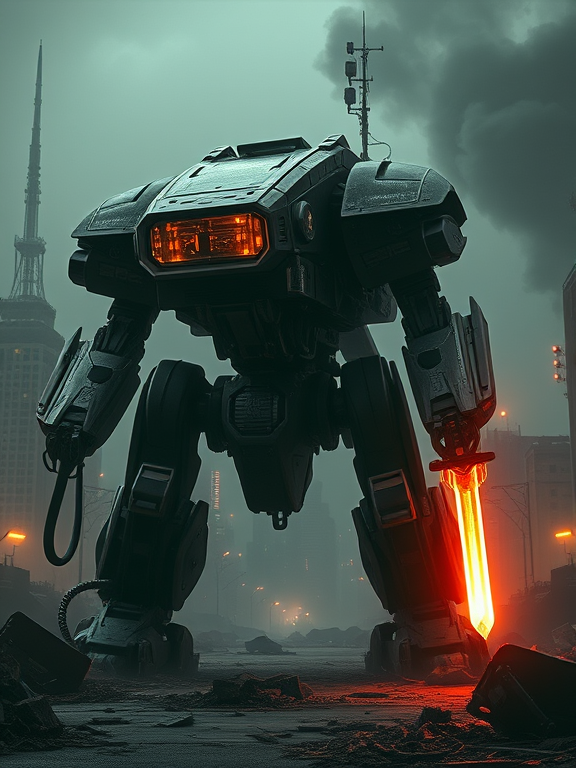
-
C. Paladins (Super-Heavy Walkers)
- Purpose: Siege and heavy frontline combat.
- Description: Towering mechs standing 15-20 meters tall, with thick, ornate armor and heavy shielding. Their frames feature reinforced hydraulics and overlapping armor plates covered with etched designs of laurels and flames.
- Armament: One super-heavy main weapon (e.g., twin-linked laser cannon or plasma devastator) and one devastating melee weapon (power sword, power fist, etc.).
- Defense: Heavy plasteel armor, powerful energy shields.
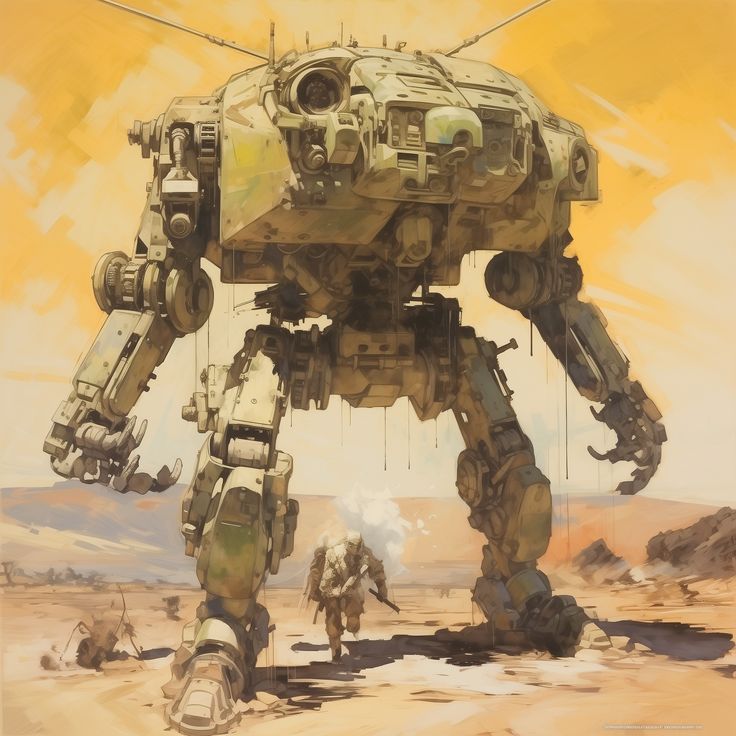
4. Attack Flyers
Description: The AF-17 Skystreak is a sleek quad-engine VTOL (Vertical Takeoff and Landing) aircraft designed for rapid deployment, precision strikes, and close air support. Its aerodynamic frame, featuring 2 sets of swept-back wings and 4 articulated jet engines, is engineered for speed and maneuverability. The hull is adorned with curved armor plates engraved with the Heimveld’s signature vine motifs, subtly emphasizing its allegiance while maintaining a functional, battle-ready appearance.
The Skystreak is a critical asset in the Ironstride Corps, capable of striking deep into enemy territory, supporting ground forces, and engaging enemy aircraft. Its versatility allows it to serve in both offensive and defensive roles, making it a backbone of aerial operations.
Armament:
- Nose-Mounted Cannon: A high-velocity HE (High-Explosive) cannon capable of shredding infantry, light vehicles, and hardened targets with precision.
- Wing-Mounted Weapons:
- Heat Lances: Emit concentrated energy beams designed to penetrate heavy armor.
- Plasma Guns: Rapid-firing energy weapons for sustained engagements against multiple targets.
Missile Pods (Optional Loadout): Attack Flyers can be outfitted with guided missile pods for precision strikes against fortified positions or enemy aircraft.
Defense Systems:
- Energy Shields: Medium-strength shielding capable of absorbing heavy small-arms fire and moderate anti-aircraft rounds.
- Reinforced Fuselage: The Skystreak’s hull is crafted from plasteel alloy, offering robust protection without compromising speed.
Speed & Maneuverability:
Powered by four articulated jet engines, the Skystreak achieves exceptional speed and agility. Its VTOL capability allows it to hover, strafe, and perform vertical landings and takeoffs, making it effective in urban, forested, or mountainous terrains. The engines can pivot for sharp turns and quick evasive maneuvers, enabling it to outpace and out-turn most enemy aircraft.
Crew & Cockpit Features:
- Crew: A pilot and a weapons officer, seated in tandem.
- Cockpit: Enclosed in reinforced glass, the cockpit features an advanced HUD (Heads-Up Display) linked to targeting systems and ground command. The weapons officer manages firing solutions and sensor arrays, while the pilot focuses on navigation and evasive maneuvers.
Sensors & Targeting:
The Skystreak is equipped with a state-of-the-art sensor suite, including thermal imaging, radar, and battlefield mapping capabilities. These systems allow it to identify and engage targets with unparalleled precision, even in adverse weather or at night.
Tactical Role:
Attack Flyers excel in providing close air support to ground forces, using their speed and firepower to suppress enemy positions or eliminate priority targets. They are also deployed as strike craft during larger offensives, disrupting supply lines or destroying key infrastructure. In aerial combat, they rely on their agility and shielding to outmaneuver heavier enemy craft.
Additional Features:
- Advanced Comms Array: Enables seamless coordination with ground units and other aircraft.
- Emergency Systems: In the event of catastrophic damage, the Skystreak is equipped with ejection systems for both crew members, as well as deployable countermeasures to confuse enemy tracking systems.
- Stealth Configurations (Optional): Some variants feature reduced emissions and radar-absorbent materials for covert operations.
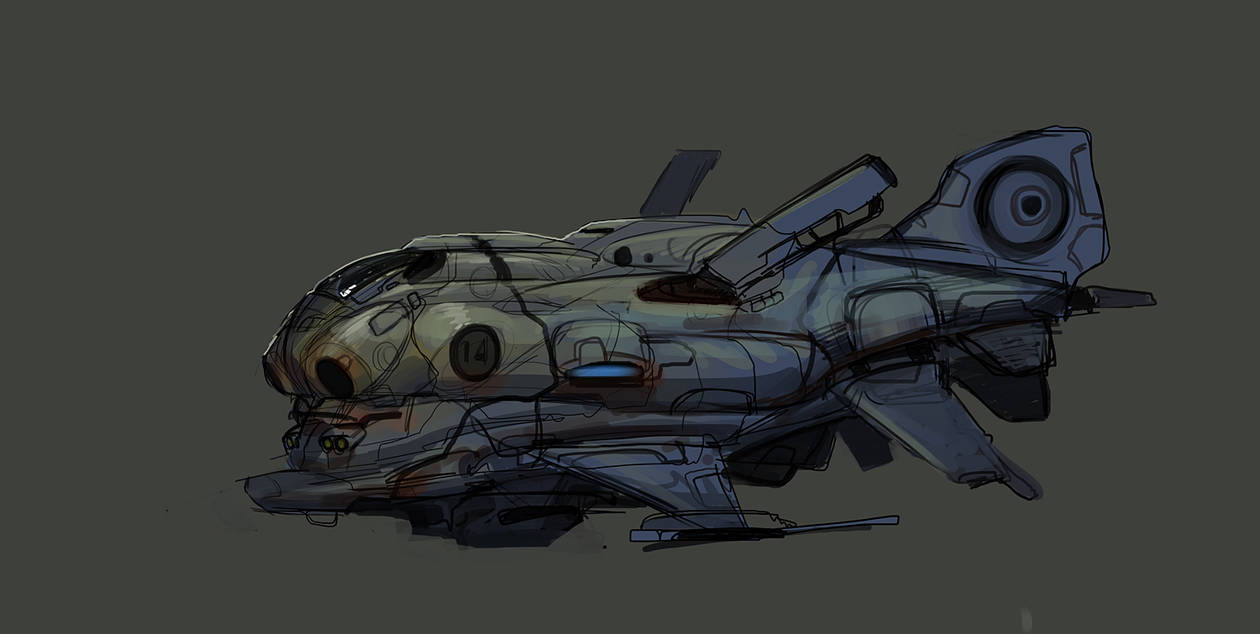
5. Transport Flyers
Description The TF-92 Skyhauler, is a large, quad-engine VTOL craft designed for rapid troop deployment, cargo transport, and evacuation operations. Its blocky, utilitarian design prioritizes function over form, with wide rear loading ramps, reinforced fuselage, and modular interiors for versatility. Despite its rugged appearance, the Skyhauler carries subtle art nouveau embellishments on its outer armor, including smoothly curved plating and subtle decorative elements on its engine housings and wings, a reminder of the Heimveld’s aesthetic principles even in its most practical machines.
The Skyhauler is a logistical cornerstone of the Ironstride Corps, capable of operating in both combat zones and non-combat supply missions, often under heavy fire.
Capacity:
- Troop Transport Variant: Holds up to 40 fully armed troops, with seating along the walls and central racks for additional gear.
- Cargo Variant: Equipped to carry up to 20 tons of supplies, vehicles, or ammunition, with tie-down points and magnetic locking systems to secure loads during flight.
- Medical Evacuation Variant: Outfitted with modular med-bays capable of treating up to 15 wounded personnel simultaneously.
Armament:
While not a dedicated combat craft, the Skyhauler includes defensive weaponry to protect itself during operations:
- Nose-Mounted Gun: A medium-caliber rotary cannon for suppressive fire during landings or takeoffs.
- Side-Mounted Autocannons: Operated by gunners, these weapons provide lateral coverage, targeting enemy infantry, vehicles, or light aircraft.
- Countermeasure Pods: Deploy chaff, flares, or EMP pulses to disrupt enemy targeting systems and missiles.
Defense Systems:
- Armor: Reinforced plasteel plating protects critical systems and crew compartments. The hull is designed to absorb impacts and reduce the risk of catastrophic failure.
- Energy Shielding: Moderate shielding absorbs small-arms fire and mitigates damage from explosives or anti-aircraft rounds.
Engines & Mobility:
The Skyhauler’s four articulated engines allow for precise maneuvering in tight spaces, such as urban environments or forested areas. While not as fast or agile as the Skystreak, it is reliable and capable of steady flight under heavy loads. Its VTOL capabilities ensure smooth landings and takeoffs in difficult terrain, including uneven surfaces or makeshift landing zones.
Interior Features:
- Modular Design: The Skyhauler’s interior can be rapidly reconfigured for different missions, with swappable modules for troop transport, cargo hauling, or medical support.
- Reinforced Flooring: Supports heavy loads, including vehicles such as Tanks, APCs and Lancers.
- Onboard Systems: Features include an air filtration system, climate control, and a basic communication hub for coordinating with ground forces.
Crew & Cockpit:
- Crew: Typically includes two pilots, a flight engineer, and two gunners (one for each side-mounted autocannon).
- Cockpit: The cockpit features advanced instrumentation, with a panoramic HUD linked to navigation, targeting, and communication systems. Pilots are trained to maintain control under high-stress conditions, including evasive maneuvers and emergency landings.
Tactical Role:
The Skyhauler is primarily used for transporting troops and supplies to forward operating bases, delivering reinforcements directly to the front lines, or evacuating wounded personnel. During large-scale offensives, Skyhaulers often operate in groups, escorted by Attack Flyers and ground-based anti-air support. In defensive operations, they serve as lifelines, ensuring steady resupply and reinforcement.
Additional Features:
- Crash Mitigation Systems: Includes reinforced crash frames and emergency landing protocols to protect passengers during forced landings.
- Night Operations Mode: Equipped with low-visibility flight capabilities, including silent engine configurations and reduced light emissions for stealthier approaches in hostile territory.
- Heimveld Heraldry: The Skyhauler often displays the insignia of the unit it serves, painted on its sides or the rear ramp, reinforcing the Corps’ identity and morale.
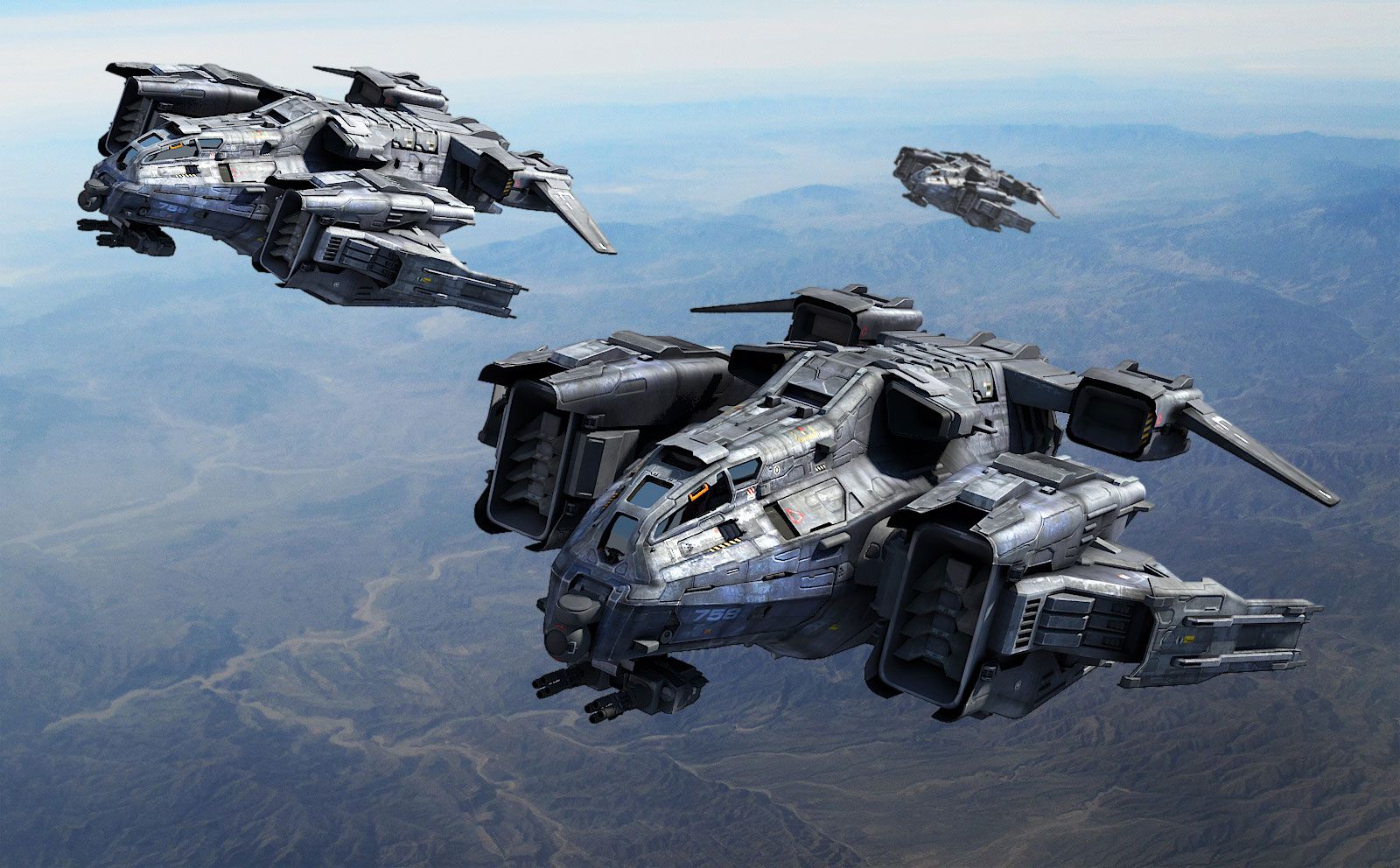
6. Ironstride Tank
Description: The MBT-88 Resolute is the Heimveld’s premier main battle tank, designed for heavy ground engagements and battlefield domination. With its smoothly curved silhouette, reinforced tracks, and central turret, the Resolute embodies a balance of firepower, durability, and mobility. Despite its brutal utilitarian function, the tank retains the Heimveld’s art nouveau aesthetics, with ornate sculpted panels, embossed vine motifs, and engraved grilles on the sponsons. The Ironstride Tank is a symbol of the Ironstride Corps’ might, often leading armored columns into battle with overwhelming firepower and resilience.
Armament: The main turret is equipped with a high-velocity laser cannon or plasma gun capable of devastating enemy armor and fortified positions. It has a moderate rate of fire and precise targeting for long-range engagements. Side-mounted sponsons house twin machine guns, flamers, or Autocannons for infantry and light vehicle suppression. Sponsons are strategically placed to cover the tank’s flanks, ensuring no blind spots. Additional secondary weapons include smoke launchers to obscure vision and disrupt targeting systems and an optional anti-aircraft rotary gun mounted atop the turret to engage low-flying aircraft or drones.
Defense Systems: The Resolute’s armor is heavy plasteel reinforced with ablative layers to absorb and deflect kinetic and energy-based attacks. Its low curved design maximizes deflection against incoming rounds. While shielding is minimal, it is sufficient to withstand small-arms fire and occasional glancing blows from heavier weapons. Automated damage control systems manage critical repairs, while reinforced compartments protect the crew in case of breaches.
Mobility: Wide, reinforced tracks provide stability and mobility across rough terrain, from open battlefields to urban rubble. A fusion-powered drive allows sustained operation and a top speed of 120 km/h on flat terrain. Advanced suspension systems enable the tank to traverse uneven terrain without compromising stability or firing accuracy.
Crew & Interior: The Resolute is operated by a crew of four: commander, gunner, driver, and engineer. The commander sits in a reinforced turret capsule with a panoramic HUD that displays real-time battlefield data. The gunner controls the primary weapon and targeting systems. The driver manages the tank’s mobility with advanced controls and navigational aids, while the engineer monitors system integrity, handles automated repairs, and oversees secondary weapons.
Targeting Systems: The tank’s AI-assisted targeting suite integrates sensors that track thermal signatures, movement, and energy emissions. It compensates for environmental factors like wind, terrain, and visibility to ensure accurate shots at extreme ranges.
Tactical Role: The Resolute serves as the backbone of the Heimveld’s armored forces, excelling in both offensive and defensive operations. In offensive roles, it leads armored spearheads, using its firepower to breach enemy defenses and crush fortified positions. On defense, it holds key positions, acting as an immovable bulwark against enemy advances. In combined arms tactics, Resolutes work seamlessly alongside infantry, walkers, and Attack Flyers, coordinating strikes for maximum effectiveness.
Additional Features: The Ironstride is linked to the Corps’ command network, providing real-time data on enemy movements and receiving orders without delay. Each tank is adorned with unit insignia, banners, and the Heimveld’s emblem, often painted prominently on the turret or hull. These decorations serve both to inspire allies and intimidate foes. The tank is engineered to withstand extreme environmental conditions, including desert heat, icy tundras, and radiation zones. Its systems are shielded against EMPs and other battlefield hazards. Supply modules allow it to carry limited extra fuel, ammunition, or supplies for nearby infantry or vehicles in emergencies.
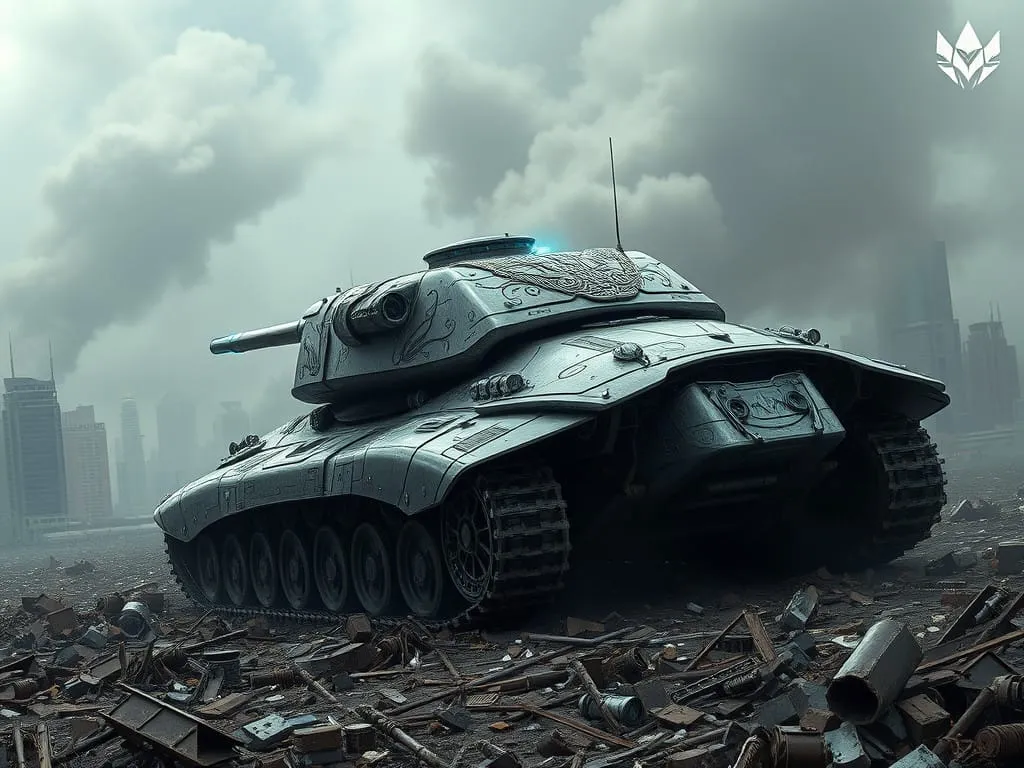
7. Drones
- A. Recon Drones
- Small, hovering machines equipped with sensory equipment for battlefield intelligence.
- Unarmed but highly maneuverable.
- B. Assault Drones
- Larger, tracked or quad-rotor machines carrying light plasma guns or HE cannons.
- Moderate shielding and durable chassis.
Defensive Measures
- Plasteel Armor: Standard for all vehicles, combining durability and mass-producibility.
- Energy Shields: Provide an additional layer of defense, with strength increasing based on vehicle size.